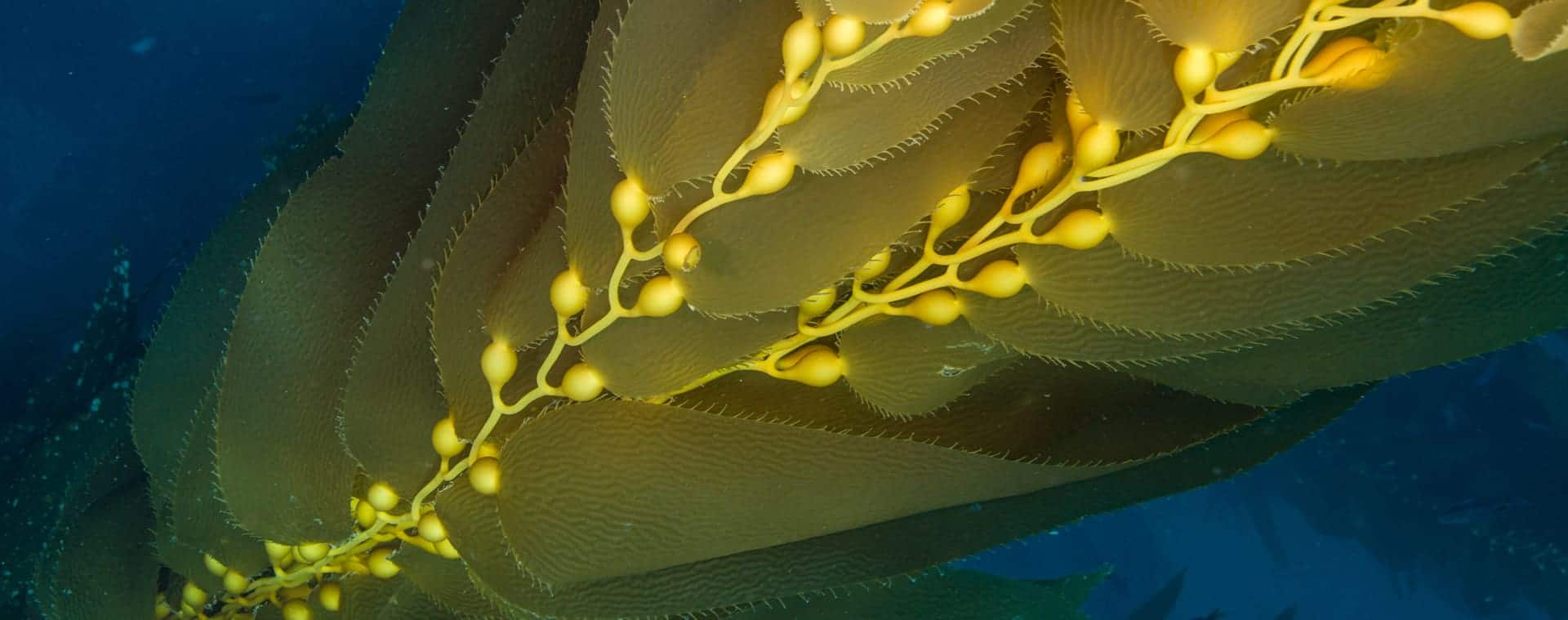
What happened to the kelp?
Since 2014, bull kelp forests in northern California have declined by over 90 percent due to a combination of extreme warm water events (marine heatwaves and El Niño), a loss of predatory species like the sea otter and sunflower sea star, and dramatic increases in native purple sea urchin populations. The combination of these stressors was too much for kelp forests to persist, and they transitioned into “urchin barrens”. To learn more about kelp forest and urchin barren dynamics, click here.
What are we doing to address this?
Reef Check is testing if a reduction in herbivores (urchins) will facilitate kelp re-growth. At several locations in central and northern California, we will explore different methods to reduce purple urchin populations and promote kelp growth. These sites were chosen as restoration sites because they show potential for kelp recovery and because they are of particular interest to the local communities of recreational divers and fishers.
Mendocino County Restoration Project

Reef Check Foundation led a collaborative approach to restore the bull kelp forest ecosystems in Mendocino County through Ocean Protection Council funding. It included collaboration from commercial sea urchin divers, Reef Check volunteers, community volunteers, government agencies, and other nonprofit organizations. The project has been instrumental in informing the development of a restoration ‘toolkit’ as well as providing economic benefits to communities hit hardest by the loss of the kelp forest.
Restoration occurred in two sites— Noyo Bay, beginning in August 2020, and Albion Cove in July 2021. Results from 15 months of restoration efforts at Noyo Bay and four months at Albion Cove are now available.
Ongoing restoration efforts at these two sites are being conducted in collaboration with the Nature Conservancy, Moss Landing Marine Lab, and the California Department of Fish and Wildlife.
Summary Results Report Full Results ReportLovers Point Kelp Forest Restoration Experiment

In Monterey County, a select team of Reef Check volunteers are investigating at what density of sea urchins giant kelp can reestablish reefs in central California. Under the guidance of Reef Check scientists, these volunteers are establishing different density levels on experimental reefs. They are experimenting with different removal methods and schedules to maintain low densities on these reefs. Initial results suggest that if urchins are removed at short time intervals and urchin migration to those reefs is controlled, kelp is able to recruit and grow. Results from this small scale experiment will be used to inform larger scale restoration efforts in central California and elsewhere.
Tanker’s Reef Kelp Forest Restoration Project
In December 2020, the California Fish and Game Commission (FGC) adopted an amendment that allows divers with a California sport fishing license to take unlimited purple sea urchin and red sea urchin at Tanker’s Reef in Monterey County. The goal of this amendment is to allow recreational divers to remove urchins in order to restore kelp forest at this site. Reef Check is working with the California Department of Fish and Wildlife (CDFW), California Ocean Protection Council (OPC), Monterey Bay National Marine Sanctuary (MBNMS) and Giant Giant Kelp Restoration (G2KR) to monitor this kelp restoration effort to address some of the following key management questions:
- Can divers operating under the proposed sea urchin sport harvest regulations reduce sea urchin densities to levels expected to facilitate kelp regrowth?
- Does reduction of sea urchin grazing pressure facilitate natural kelp regrowth?
- Are there negative impacts associated with urchin culling (e.g. bycatch, damage to underlying reef structure, disturbance to marine mammal populations)?
- Can recreational divers collect, analyze, and communicate data/results in a way that is both scientifically sound and informative to resource managers?
Latest monitoring results: July 2022



 Subscribe to Newsletter
Subscribe to Newsletter Donate
Donate Shop
Shop 0
0








